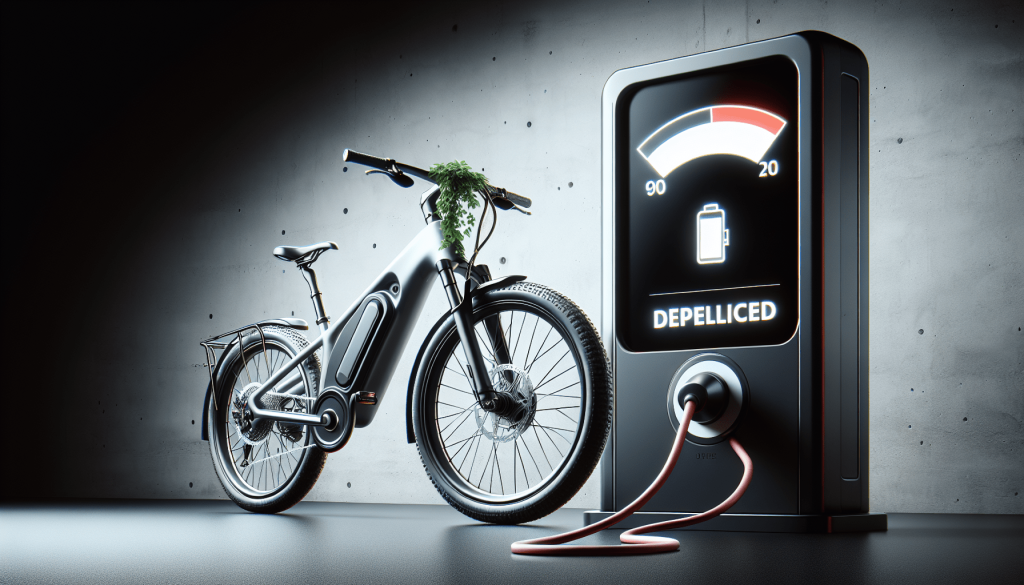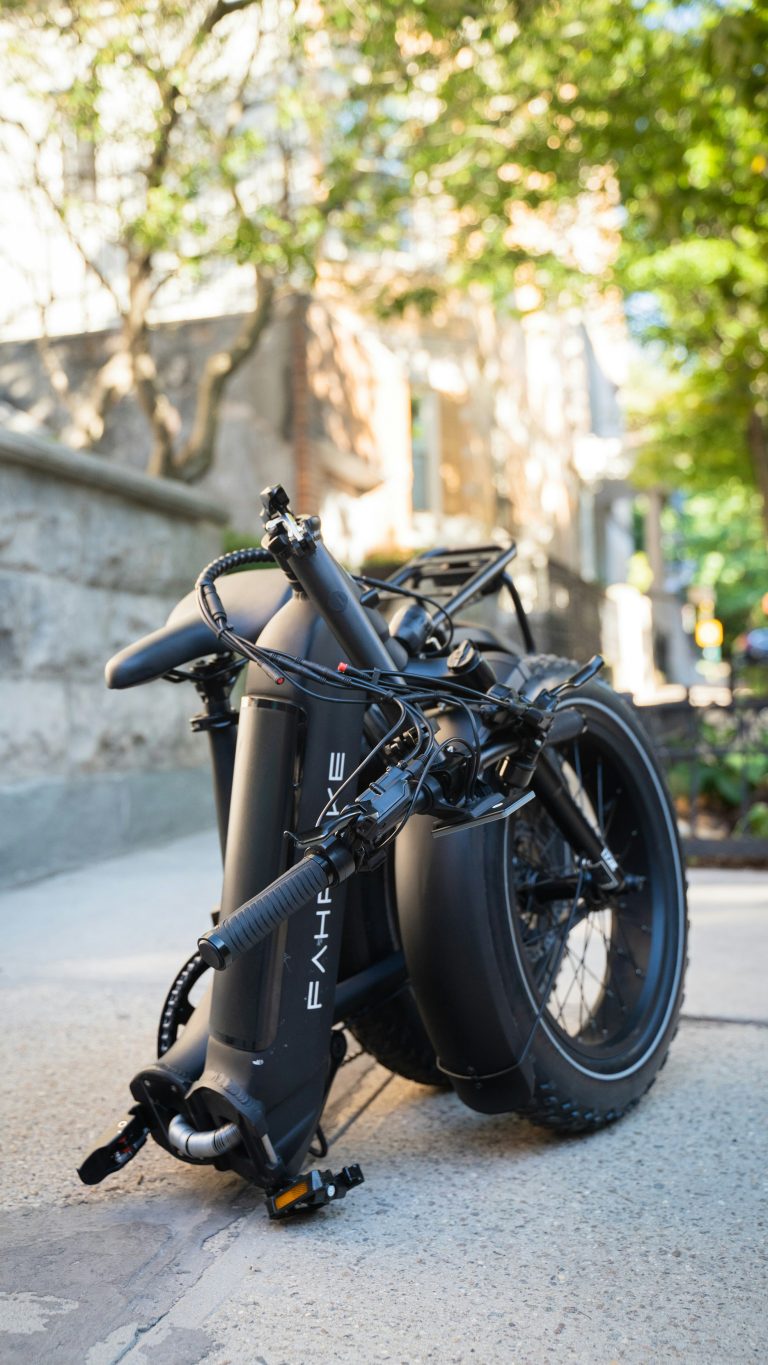Can You Still Ride An Ebike With Dead Battery?
Picture this: you’re cruising along on your trusty eBike, feeling the wind in your hair and the thrill of the open road… until suddenly, disaster strikes. Your battery dies. Panic sets in as you wonder if your joyride has come to an abrupt end. But fear not, adventurer! In this article, we’ll explore the thrilling possibility of riding an ebike with a dead battery. Stay tuned to discover the surprising answer to this electric dilemma.

Understanding ebike batteries
Ebikes, or electric bicycles, have become increasingly popular for their ability to provide assistance to riders through a battery-powered motor. However, just like any other battery-powered device, ebike batteries have a limited lifespan and will eventually die. Understanding the different types of ebike batteries, how they work, and the factors that can affect their life is essential for ebike riders.
Types of ebike batteries
There are several types of batteries commonly used in ebikes, including lithium-ion, lithium-polymer, and nickel-metal hydride. Each type has its own advantages and disadvantages in terms of weight, capacity, lifespan, and cost. Lithium-ion batteries are the most commonly used due to their high energy density, long lifespan, and relatively low weight. It is important for riders to choose a battery type that suits their specific needs and budget.
How ebike batteries work
Ebike batteries are rechargeable devices that store electrical energy and provide it to the motor to assist the rider when pedaling. The battery is connected to the motor via a wiring system, and when the rider activates the electric assist mode, the battery releases the stored energy, providing additional power to the motor. The amount of assistance provided depends on the rider’s chosen assist level and the battery’s capacity. As the battery’s energy depletes, the assistance level may decrease, affecting the overall performance of the ebike.
Factors affecting ebike battery life
Several factors can influence the lifespan of an ebike battery. The most significant factor is the number of charging cycles the battery goes through. Most ebike batteries can be charged between 500 and 1000 times before their capacity begins to degrade significantly. Other factors include temperature extremes, improper charging practices, and overall battery maintenance. It is crucial for ebike riders to understand these factors and how to mitigate their effects on battery life to ensure optimal performance.
What happens when an ebike battery dies
While riding an ebike with a fully functional battery provides a smooth and effortless experience, what happens when the battery dies? Let’s explore the consequences of a dead ebike battery.
Loss of electric assist
The most obvious effect of a dead ebike battery is the complete loss of electric assist. Without a charged battery, the motor cannot provide any assistance to the rider’s pedaling efforts. This can significantly impact the ease of riding, especially on hilly terrain or when riding for longer distances.
Increase in weight
Ebikes are typically heavier than traditional bicycles due to the added weight of the battery and motor. When the battery dies, the rider is left with the additional weight of these components, which can make pedaling more difficult and strenuous. The increase in weight can also affect the overall maneuverability and handling of the ebike.
Limited speed and range
The performance of an ebike with a dead battery is limited compared to a fully functional one. Without electric assist, the rider will likely experience a decrease in speed and range. Hills and inclines will be even more challenging to conquer, and the overall distance the rider can travel on a single charge will be significantly reduced.
Riding an ebike with a dead battery
While riding an ebike without electric assist may not be as enjoyable as having a fully functional battery, it is still possible to continue riding. Here are some key points to consider when riding with a dead ebike battery.
Pedal power only
When the battery dies, the rider must rely solely on their pedaling power to propel the ebike forward. This requires more effort and physical exertion, especially when encountering uphill sections or strong headwinds. Riders should mentally prepare for the increased physical exertion and adjust their expectations accordingly.
Increased effort required
Without the assistance of the electric motor, riders will need to exert more effort to maintain the same speed and momentum. This can be particularly challenging for individuals who are not accustomed to regular cycling or for those with physical limitations. It’s important to be aware of one’s own fitness level and take appropriate breaks when needed.
Limited uphill capability
Uphill climbs are particularly challenging when riding with a dead ebike battery. The lack of electric assist means that riders will need to rely solely on their own leg power to overcome the inclines. It may be necessary to dismount and walk the ebike uphill in some cases, especially for individuals with limited strength or endurance.
Safety considerations when riding without electric assist
Riding an ebike with a dead battery presents some safety considerations that riders must be aware of. These include:
Braking and control
Without electric assist, the ebike may feel different in terms of handling and control. Riders should practice braking and maneuvering at lower speeds to get accustomed to the change in dynamics. It’s important to be alert and maintain a safe braking distance from other vehicles and obstacles.
Visibility and lighting
Ebike batteries often include integrated lights that increase visibility and safety, especially during low-light conditions. When riding with a dead battery, it’s crucial to ensure that other road users can still see you. Consider adding additional lights or reflective gear to enhance your visibility and stay safe.
Road traffic laws
Riding an ebike with a dead battery does not exempt riders from abiding by road traffic laws. It’s important to follow all traffic rules, including speed limits and right-of-way regulations. Maintaining a safe and responsible riding behavior is paramount for both personal safety and the safety of others sharing the road.

Tips for riding an ebike with a dead battery
While riding an ebike with a dead battery may not provide the same level of convenience and ease as a fully functional one, there are some tips that can enhance the experience:
Plan shorter trips
Since riding without electric assist requires more effort and physical exertion, it’s advisable to plan shorter trips to avoid exhaustion. Breaking up longer journeys into more manageable segments allows for rest breaks and reduces the strain on the rider.
Carry a spare battery or charger
To avoid being caught without power, consider carrying a spare battery or charger. This allows riders to quickly replace the dead battery or recharge it if a power source is available. It’s essential to consider the weight and additional space required when carrying a spare battery or charger.
Utilize downhill routes
Take advantage of downhill routes whenever possible. The natural inclination of the slope can reduce the effort required to maintain speed and make the ride more enjoyable. Planning a route that maximizes downhill sections can help offset the challenges of riding with a dead battery.
Maintenance and care for ebike batteries
Proper maintenance and care of an ebike battery can extend its lifespan and ensure optimal performance. Some essential considerations include:
Proper storage and charging
When not in use, it’s important to store the battery in a cool, dry place, ideally at a moderate temperature between 20-25°C. Avoid exposing the battery to extreme temperatures, as this can negatively impact its performance and lifespan. Additionally, follow the manufacturer’s guidelines for charging the battery to avoid overcharging, undercharging, or charging at excessive temperatures.
Regular inspections and cleaning
Periodically inspect the battery for any signs of damage, such as cracks or leaks. If any issues are detected, it’s important to take the ebike to a professional for assessment and repair. Regularly cleaning the battery terminals with a soft cloth and ensuring they are free from dirt or corrosion can help maintain good electrical connections.
Replacing a dead battery
If the battery’s performance continues to deteriorate to the point where it no longer provides sufficient power or range, it may be necessary to replace it. Consult the manufacturer or an authorized dealer for guidance on purchasing a compatible replacement battery and ensure proper disposal of the old battery in accordance with local regulations.

Alternatives to riding with a dead ebike battery
In situations where riding with a dead ebike battery is not feasible, there are alternative transportation options that riders can consider:
Pushing the ebike
If the distance is short and manageable, riders can simply push the ebike to their destination. While this may not be the most efficient or enjoyable alternative, it can be a temporary solution to get the ebike to a charging station or a more convenient location.
Calling for assistance
In cases where the distance is too far to push, riders can consider calling for assistance. This can involve contacting a friend or family member for a ride, using a ridesharing service, or requesting roadside assistance if available.
Using public transportation
When accessible, utilizing public transportation can be a convenient alternative to riding an ebike with a dead battery. Many public transit systems allow bikes on board or have designated bike racks. This option allows riders to continue their journey without the physical exertion required by pedaling.
Benefits and drawbacks of riding an ebike with a dead battery
Riding an ebike with a dead battery can have both advantages and disadvantages. Here are some key considerations:
Physical exercise
Riding an ebike without electric assist requires more physical effort, which can provide a valuable opportunity for exercise. Pedaling without assistance engages and strengthens muscles, promoting cardiovascular health and overall fitness.
Possible frustration and inconvenience
The loss of electric assist can result in frustration and inconvenience, especially for riders who are accustomed to the convenience and ease of a fully functional ebike. The increased effort and limited speed can impact the enjoyment of the ride, particularly on longer or more challenging routes.
Reduced environmental impact
When riding an ebike without electric assist, there is no reliance on the battery’s stored energy. This means that the ride becomes entirely human-powered, resulting in a reduced environmental impact. Riding with a dead battery is an eco-friendly alternative to using a motorized vehicle for transportation.

Common myths and misconceptions about dead ebike batteries
There are several myths and misconceptions surrounding dead ebike batteries that need to be addressed:
Permanent damage to the ebike
Riding an ebike with a dead battery does not cause permanent damage to the ebike itself. The motor and other components will not be negatively affected by the lack of power from the battery. However, it is crucial to address the underlying issue causing the battery to die to prevent further problems.
Risk of getting stranded
While riding with a dead ebike battery may limit the speed and range, it does not necessarily mean getting stranded. With proper planning, riders can choose routes that are within their physical capabilities and proximity to charging stations or assistance if needed. It’s important to exercise caution and make informed decisions to prevent any potential issues.
Negligible difference in pedaling effort
Contrary to some beliefs, riding an ebike without electric assist does require significantly more pedaling effort compared to riding with a fully functional battery. The added weight of the battery and motor can make pedaling more challenging, especially on inclines or when trying to maintain higher speeds. Riders should be prepared for the increased exertion and adjust their expectations accordingly.
Conclusion
Riding an ebike with a dead battery is possible but requires physical effort and careful consideration of safety precautions. Understanding battery maintenance, exploring alternative transportation options, and debunking common misconceptions can enhance the overall ebike riding experience. With proper planning and realistic expectations, riders can continue to enjoy the benefits of an ebike, even without electric assist.








